お祭りの陽気なBGM、歌舞伎や文楽の舞台を盛り上げるドラマティックな音色、そして時には魂を揺さぶるような激しい独奏。日本の様々なシーンで、私たちは「三味線」の音を耳にします。三つの弦が織りなすその独特の響きは、まさに日本の音風景そのものです。しかし、この日本を代表する楽器が、実は海外からやってきて、日本で劇的な進化を遂げたものであることは、あまり知られていません。
- 海を渡った祖先:中国の「三弦」と琉球の「三線」
- 琵琶法師との出会いが生んだ「撥(ばち)」という革命
- 江戸文化の伴奏者から主役へ:多様化する三味線の世界
異国から来た祖先、琉球での変身
三味線のルーツを辿ると、14世紀頃の中国で生まれた「三弦(サンシェン)」という楽器に行き着きます。この三弦が、16世紀中頃(室町時代末期)、当時活発な海洋貿易を行っていた琉球王国(現在の沖縄)にもたらされました。
琉球の人々はこの新しい楽器を独自に発展させます。胴に蛇(ニシキヘビ)の皮を張り、心地よく余韻が響く独特の音色を持つ「三線(さんしん)」を誕生させたのです。三線は、王宮の雅な音楽から庶民の祝いの席の歌まで、琉球の音楽文化に深く根付いていきました。そして、この三線が琉球との貿易拠点であった大阪の堺に伝わったことこそが、日本本土における「三味線」の歴史の幕開けとなったのです。
日本本土での大改造と「撥」の誕生
堺に上陸した三線は、当時の日本の音楽家、特に琵琶(びわ)を演奏して物語を語る盲目の僧侶「琵琶法師」たちの目に留まります。彼らは、この新しい楽器に大きな可能性を見出し、日本の音楽に合うように大胆な改造を施しました。
まず、胴に張る皮を蛇皮から、より入手しやすく、かつ鋭い音の出る猫や犬の皮に変えました。そして、最大の革命が、演奏方法の変更です。指や小さな爪で弦を弾く三線に対し、琵琶の演奏で使われていた大きな「撥(ばち)」で弦を叩くようにしたのです。この撥で皮を叩きつけながら弦を弾く奏法によって、三味線は打楽器のような力強いアタック音と、鋭く伸びやかな音色を同時に手に入れました。これは、三味線が日本の音楽史において独自の地位を築く上で、決定的なイノベーションでした。
江戸の華、庶民文化とともに花開く
江戸時代に入ると、三味線はその表現力の豊かさから、またたく間に庶民文化のスターダムにのし上がります。まず、人形浄瑠璃(文楽)や歌舞伎といった舞台芸能の伴奏楽器として、物語の情景や登場人物の心情を巧みに描き出し、欠かせない存在となりました。
さらに、お座敷で楽しまれる「長唄(ながうた)」や、より短い「小唄(こうた)」「端唄(はうた)」といった歌曲の伴奏としても大流行。武士から町人まで、多くの人々が三味線の稽古に励み、その音色は江戸の街の隅々にまで響き渡りました。この過程で、演奏される音楽のジャンルに合わせて、力強い音の「太棹(ふとざお)」、叙情的な「中棹(ちゅうざお)」、軽やかな「細棹(ほそざお)」といった種類の分化が進み、三味線はあらゆる音楽シーンに対応できる万能楽器へと進化していったのです。
伝統から革新へ、現代に響く三味線の音
明治維新を経て近代化が進む中でも、三味線は日本の伝統音楽を支える重要な楽器として、その命脈を保ち続けました。そして現代、三味線は新たな局面を迎えています。
伝統的な浄瑠璃や長唄の世界でその芸が脈々と受け継がれる一方、津軽三味線に代表されるように、三味線一本で観客を魅了する独奏楽器としての芸術性も高く評価されています。さらに、その枠を飛び越え、ジャズやロック、ポップスといった現代音楽のアーティストと共演し、新しい音楽の可能性を切り拓く奏者も次々と現れています。三味線は、古い伝統を守りながらも、常に時代の空気を取り込んで変化し続ける、今なお「生きている」楽器なのです。
解説ポイント①:海を渡った祖先:中国の「三弦」と琉球の「三線」
三味線の直接の祖先である琉球の「三線」と、そのまた祖先である中国の「三弦」は、似て非なる楽器です。中国の三弦は、胴が小さく棹が長いのが特徴で、主に指で弾いて柔らかい音色を出します。これが琉球に渡り、胴にはニシキヘビの皮が張られ、宮廷音楽から民謡まで幅広い琉球文化の担い手「三線」となりました。一方、日本本土で生まれた三味線は、猫や犬の皮を張り、音の響きを調整する「さわり」という独特の機構を持つなど、より大きく鋭い音を追求した設計になっています。同じ三本の弦を持つ楽器でありながら、その土地の文化や美意識に合わせて、それぞれが独自の進化を遂げたのです。
解説ポイント②:琵琶法師との出会いが生んだ「撥(ばち)」という革命
なぜ三味線の改良に琵琶法師が深く関わったのでしょうか。当時、物語の伴奏楽器の主役は琵琶でした。琵琶法師たちは、物語の情景を劇的に表現するため、楽器を力強くかき鳴らす奏法を発展させていました。彼らが新しい楽器「三線」に出会ったとき、その潜在能力を即座に見抜き、自分たちの音楽思想、つまり「語りを引き立てるための鋭く、大きな音」を実現するために、琵琶の撥で叩くというアイデアを適用したのです。この発想の転換により、三味線はメロディを奏でるだけでなく、リズムを刻む打楽器の役割も担うようになり、その表現力は飛躍的に増大しました。
解説ポイント③:江戸文化の伴奏者から主役へ:多様化する三味線の世界
江戸時代に三味線が爆発的に普及した背景には、その驚くべき適応能力があります。用途に合わせて主に3つの種類に分化したことが、それを可能にしました。
- 太棹(ふとざお):最も大きく、力強く重厚な音色が特徴。人形浄瑠璃の義太夫節や、独奏で知られる津軽三味線で使われます。
- 中棹(ちゅうざお):太棹と細棹の中間の大きさ。人の声に近い音域で、情緒的な表現を得意とし、地歌や常磐津節、清元節などで用いられます。
- 細棹(ほそざお):最も棹が細く、軽やかで繊細、高音域のきらびやかな音色が特徴。歌舞伎の伴奏音楽である長唄や、お座敷で気軽に楽しまれた小唄、端唄などに使われます。 この専門分化により、三味線は劇場の隅々まで響く豪快な音から、座敷で楽しむささやくような音色まで、あらゆる音響空間に対応できるようになったのです。
参考文献
【English Article】
The Instrument That Shaped Japan’s Sound: A History of the Shamisen’s Journey and Evolution
From the cheerful background music of festivals and the dramatic tones that heighten the action on Kabuki and Bunraku stages, to the soul-stirringly fierce solos—we hear the sound of the “shamisen” in countless Japanese scenes. The unique timbre woven by its three strings is the very soundscape of Japan. However, it is not widely known that this quintessential Japanese instrument actually came from overseas and underwent a dramatic evolution in Japan.
- Ancestors Across the Sea: China’s “Sangen” and Ryukyu’s “Sanshin”
- A Revolutionary “Bachi” Plectrum Born from an Encounter with Biwa Players
- From Accompanist to Star of Edo Culture: The Diversifying World of the Shamisen
An Ancestor from Abroad, Transformed in Ryukyu
Tracing the roots of the shamisen leads us to an instrument called the “sangen,” which originated in China around the 14th century. In the mid-16th century, during the late Muromachi period, this sangen was introduced to the Ryukyu Kingdom (present-day Okinawa), which was then a hub of maritime trade.
The people of Ryukyu developed this new instrument in their own unique way. They stretched the skin of a python over the body, creating the “sanshin,” an instrument with a pleasant, lingering tone. The sanshin became deeply rooted in Ryukyu’s musical culture, used in everything from the elegant music of the royal court to celebratory folk songs. The arrival of this sanshin in Sakai, a trading port in Osaka, marked the beginning of the “shamisen’s” history on the Japanese mainland.
A Major Overhaul on the Mainland and the Birth of the “Bachi”
The sanshin that landed in Sakai caught the attention of Japanese musicians of the time, particularly the “Biwa Hōshi,” blind monks who recited stories while playing the “biwa” (a Japanese lute). Seeing great potential in this new instrument, they boldly modified it to suit Japanese music.
First, they changed the skin stretched over the body from python to the more readily available cat or dog skin, which produced a sharper sound. The greatest revolution, however, was the change in playing style. Instead of plucking the strings with fingers or a small pick like the sanshin, they began to strike the strings with the large “bachi” (plectrum) used for playing the biwa. This technique of striking the skin while plucking the strings with the bachi gave the shamisen both a powerful, percussive attack and a sharp, resonant tone. This was a decisive innovation that allowed the shamisen to establish its unique place in Japanese music history.
The Star of Edo, Blossoming with Popular Culture
Entering the Edo period (1603-1868), the shamisen, with its rich expressive power, quickly rose to stardom in popular culture. It became an indispensable instrument in stage arts like Ningyō Jōruri (Bunraku) and Kabuki, skillfully depicting scenes and characters’ emotions.
Furthermore, it became immensely popular as accompaniment for songs enjoyed in parlors, such as “nagauta” and the shorter “kouta” and “hauta.” People from all walks of life, from samurai to townspeople, eagerly took shamisen lessons, and its sound echoed throughout the city of Edo. During this process, the shamisen evolved to suit different musical genres, branching into types such as the powerful-sounding “futozao” (thick neck), the lyrical “chuzao” (medium neck), and the light-toned “hosozao” (thin neck), transforming it into a versatile instrument for all occasions.
From Tradition to Innovation: The Sound of the Shamisen Today
Even amidst the modernization following the Meiji Restoration, the shamisen maintained its lifeblood as a crucial instrument supporting Japan’s traditional music. Today, the shamisen is entering a new phase.
While its art is faithfully passed down in the worlds of traditional Jōruri and Nagauta, its artistic value as a solo instrument, as exemplified by the Tsugaru-jamisen, is also highly acclaimed. Moreover, transcending these boundaries, a new wave of players is emerging, collaborating with artists in contemporary genres like jazz, rock, and pop to pioneer new musical possibilities. The shamisen is a “living” instrument that continues to evolve by embracing the spirit of the times while preserving its ancient traditions.
Analysis Point ①: Ancestors Across the Sea: China’s “Sangen” and Ryukyu’s “Sanshin”
The shamisen’s direct ancestor, the Ryukyuan “sanshin,” and its own predecessor, the Chinese “sangen,” are similar yet distinct instruments. The Chinese sangen features a small body and a long neck, and is typically plucked with the fingers to produce a soft tone. When it arrived in Ryukyu, it was covered with python skin and became the “sanshin,” a bearer of a wide range of Ryukyuan culture, from court music to folk songs. In contrast, the shamisen, born on the Japanese mainland, was designed to pursue a louder, sharper sound, using cat or dog skin and incorporating a unique mechanism called “sawari” to adjust the resonance. Though they all share three strings, each instrument evolved uniquely to fit the culture and aesthetics of its land.
Analysis Point ②: A Revolutionary “Bachi” Plectrum Born from an Encounter with Biwa Players
Why were biwa players so deeply involved in the shamisen’s modification? At the time, the biwa was the leading instrument for accompanying narrative storytelling. Biwa players had developed techniques of striking their instruments forcefully to dramatically express the scenes of their stories. When they encountered the new instrument, the sanshin, they immediately recognized its potential and applied their own musical philosophy—the need for a sharp, loud sound to enhance their narratives—by adapting the idea of striking it with a biwa bachi. This conceptual shift transformed the shamisen from a simple melodic instrument into a highly expressive one that also served the percussive role of keeping rhythm, dramatically increasing its expressive power.
Analysis Point ③: From Accompanist to Star of Edo Culture: The Diversifying World of the Shamisen
The explosive popularity of the shamisen in the Edo period was due to its incredible adaptability. This was made possible by its diversification into three main types according to use:
- Futozao (Thick Neck): The largest type, characterized by a powerful and deep tone. It is used for Gidayu-bushi in Bunraku and for the solo performances of Tsugaru-jamisen.
- Chuzao (Medium Neck): A mid-sized instrument. Its vocal-like range excels at emotional expression and is used in genres like Jiuta, Tokiwazu-bushi, and Kiyomoto-bushi.
- Hosozao (Thin Neck): With the thinnest neck, it produces a light, delicate, and brilliant high-pitched tone. It is used for nagauta, the accompaniment music for Kabuki, and for the casually enjoyed kouta and hauta songs in parlors. This specialization allowed the shamisen to adapt to any acoustic space, from the thunderous sounds needed to fill a theater to the whispering tones enjoyed in an intimate room.

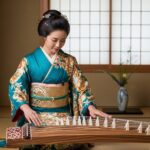


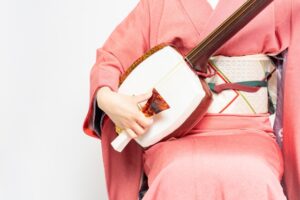

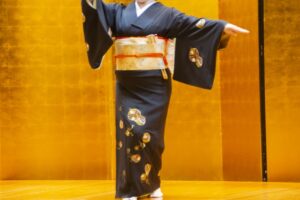
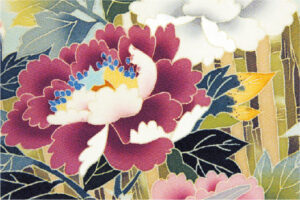
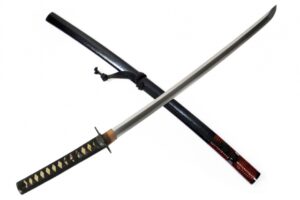
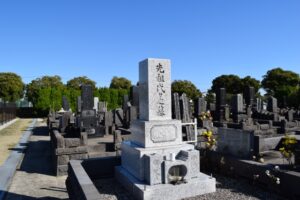
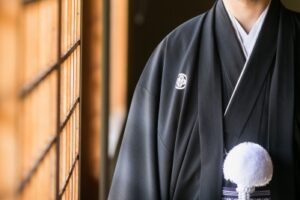
コメントを残す